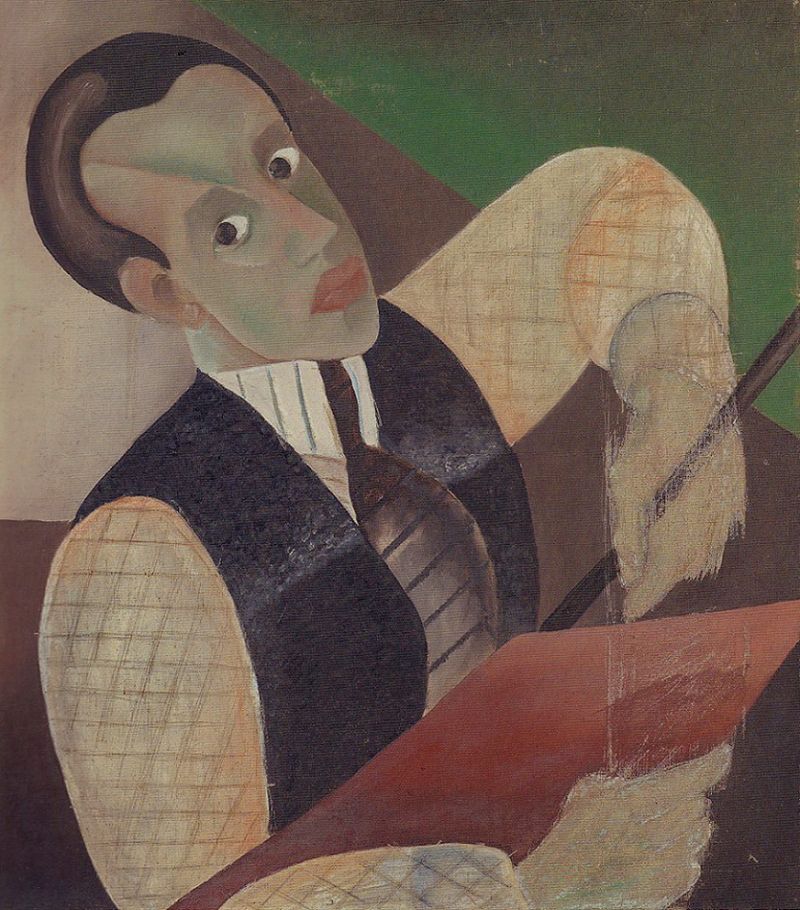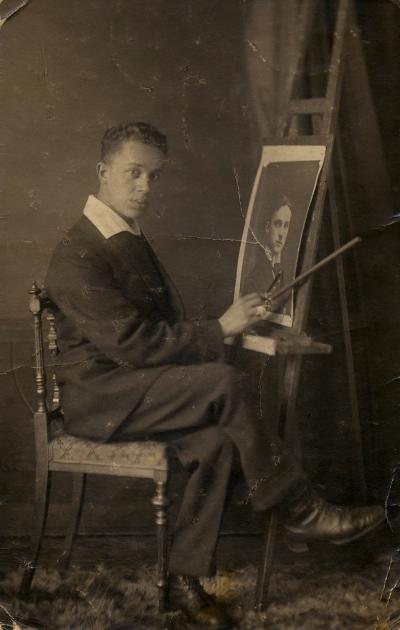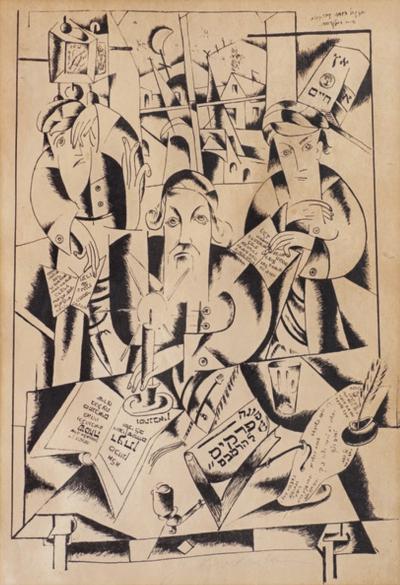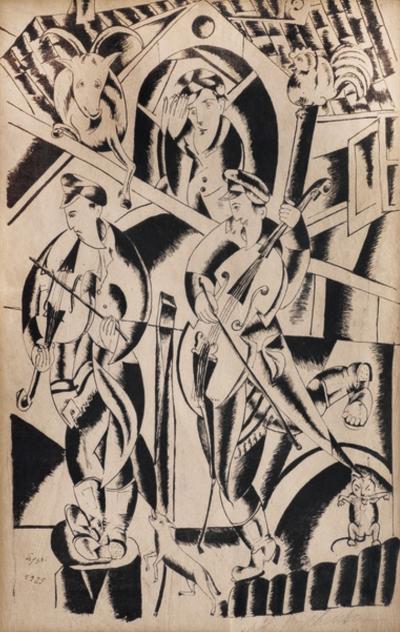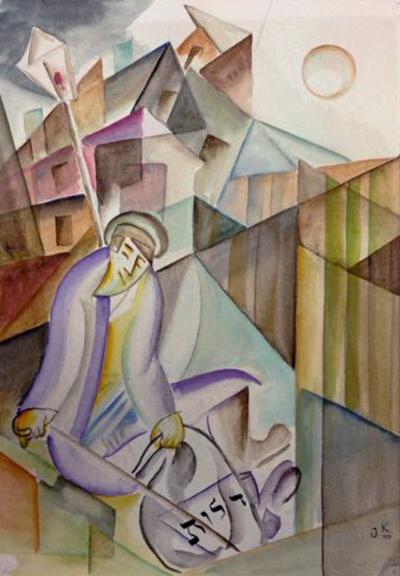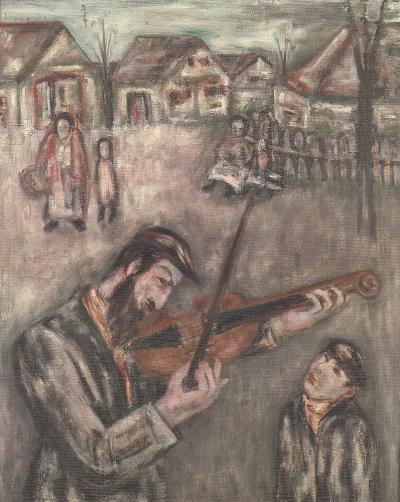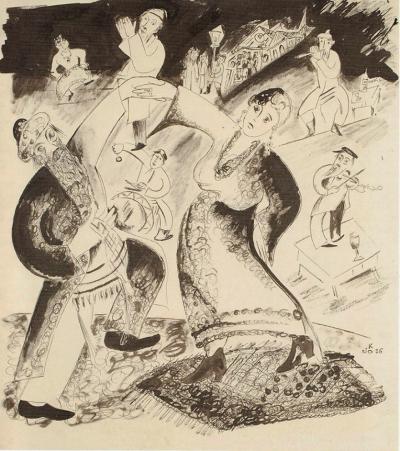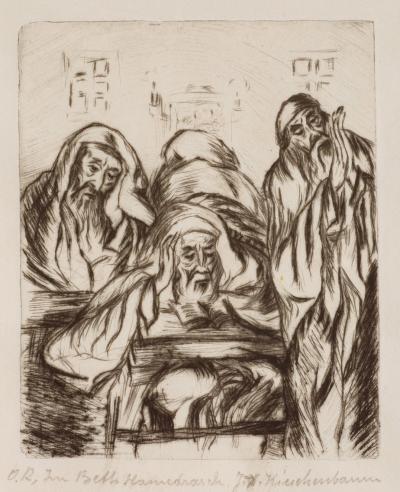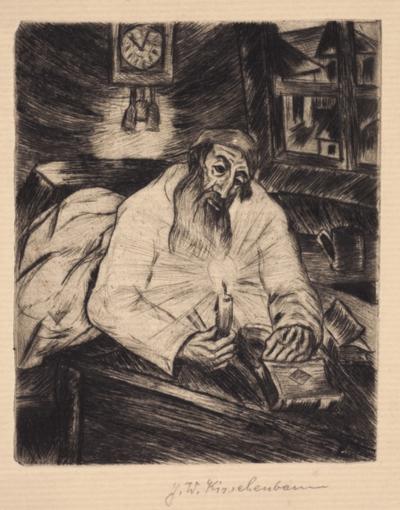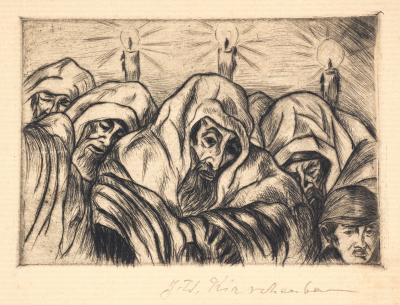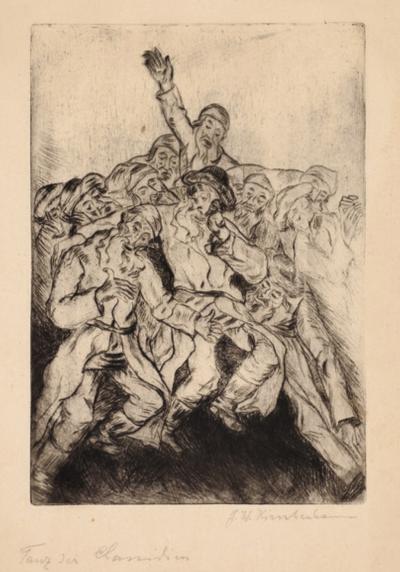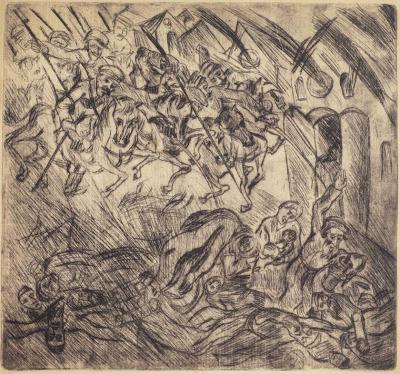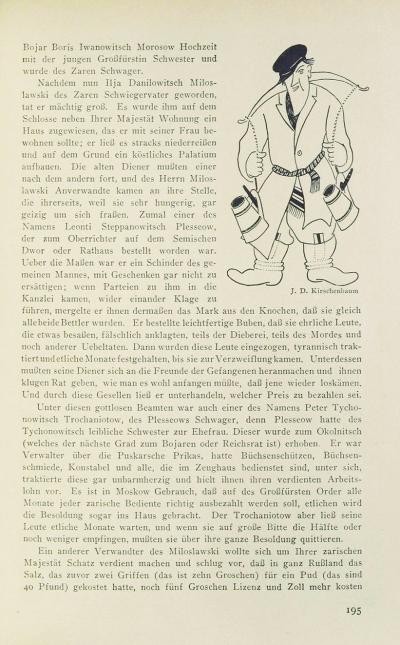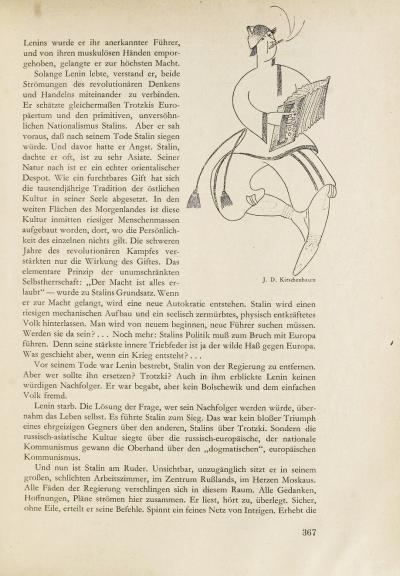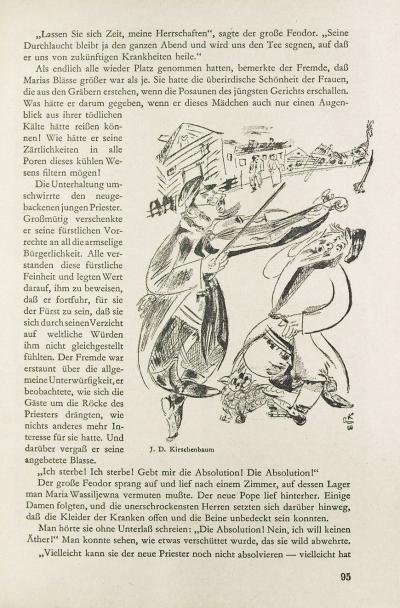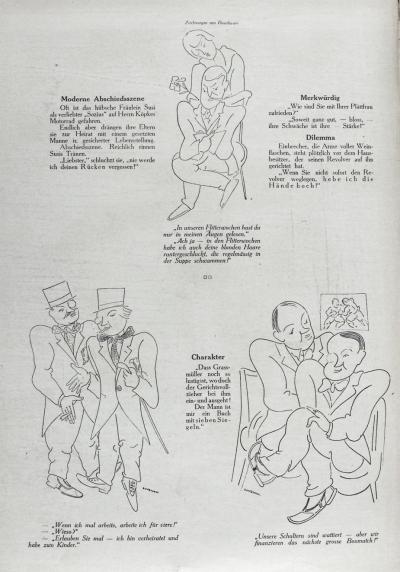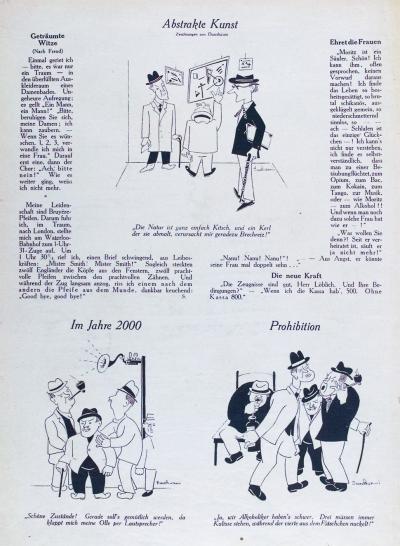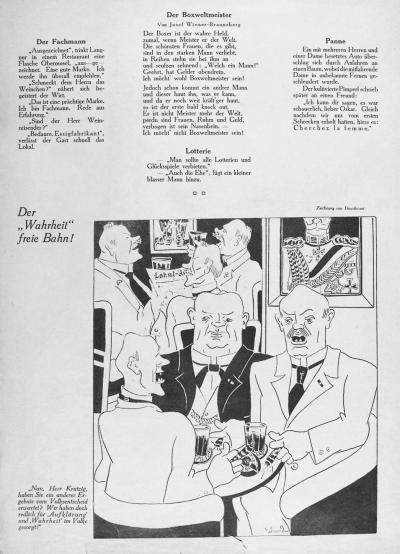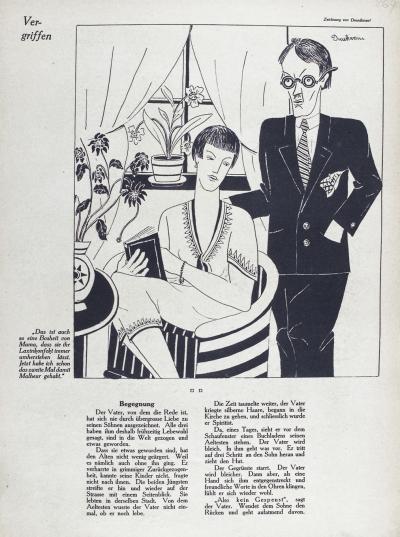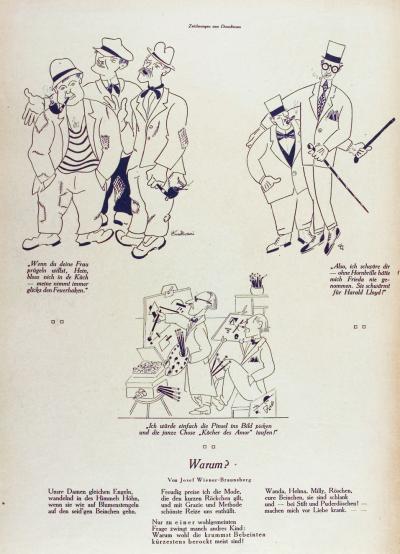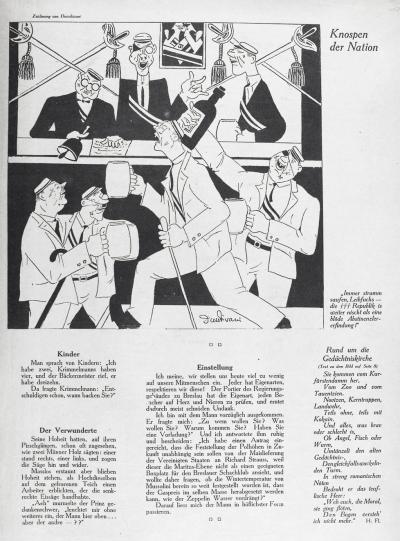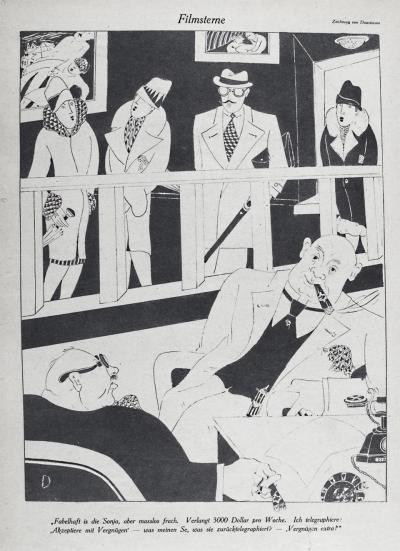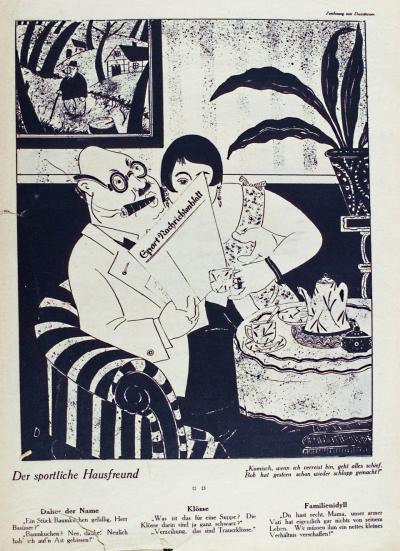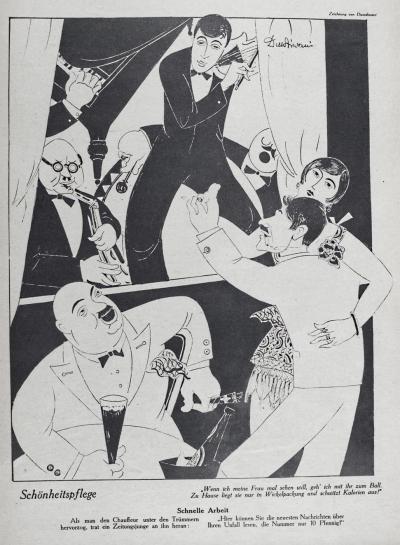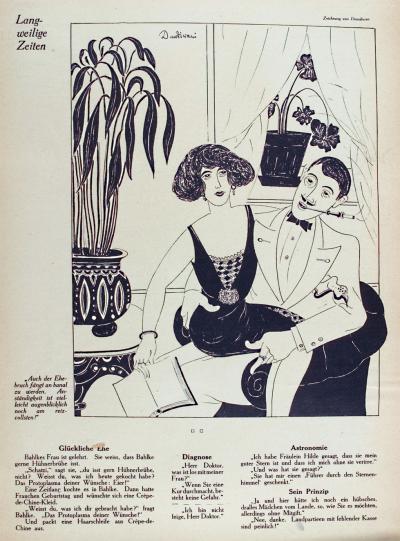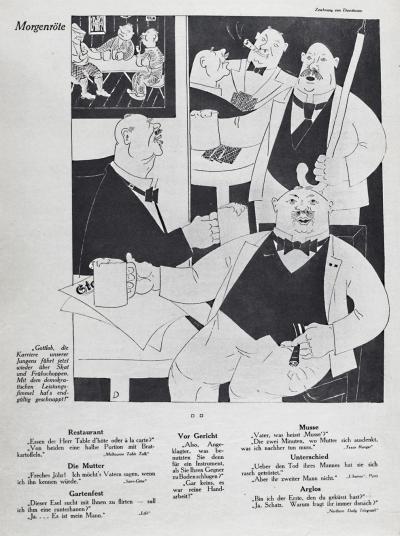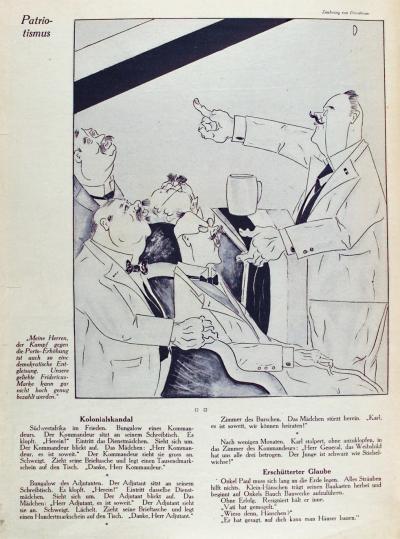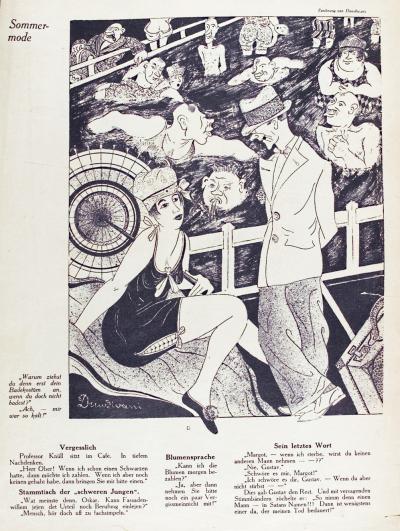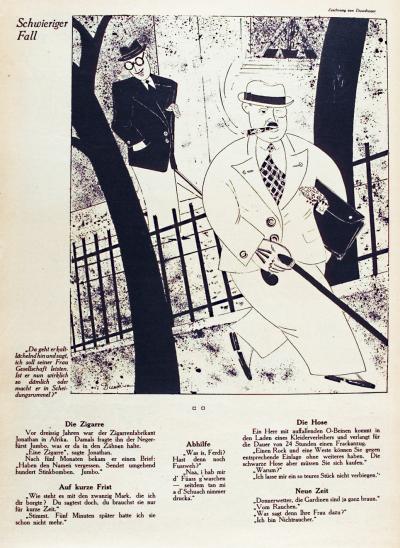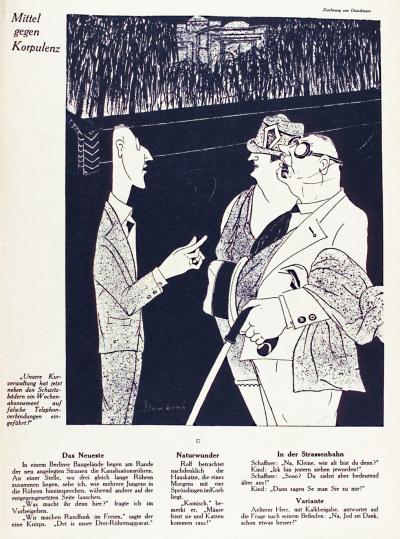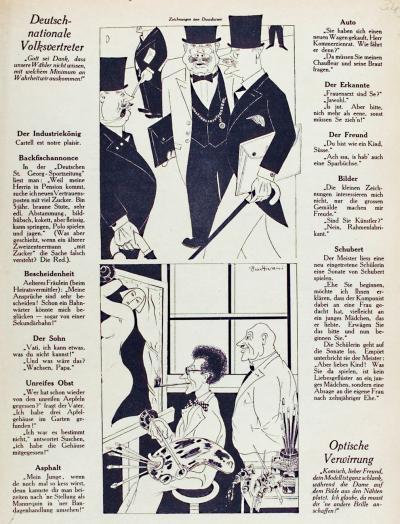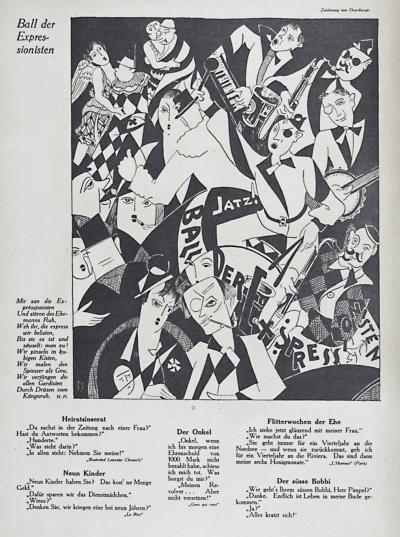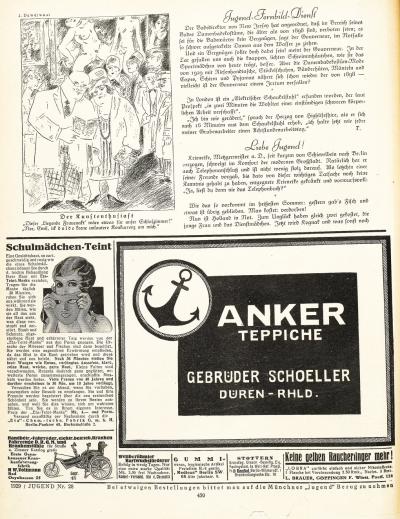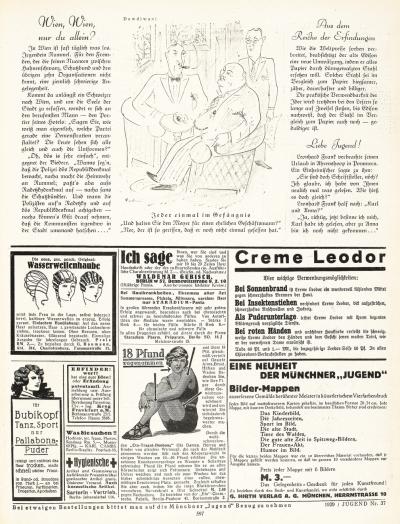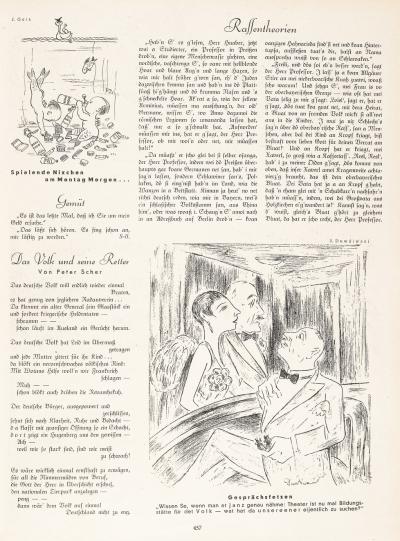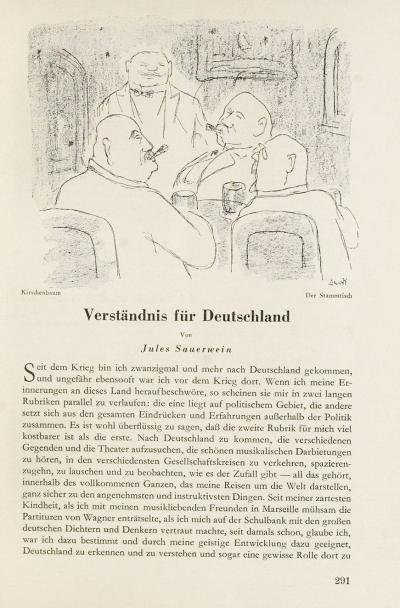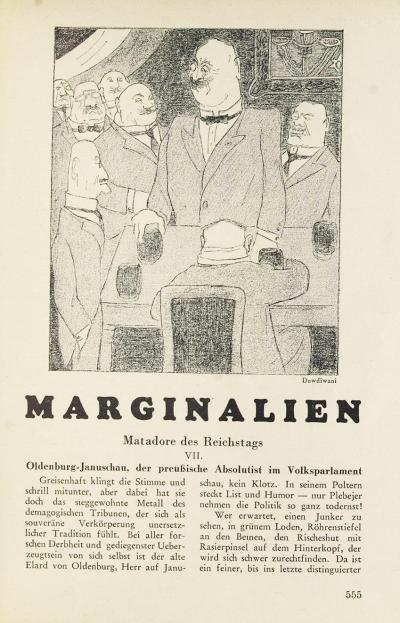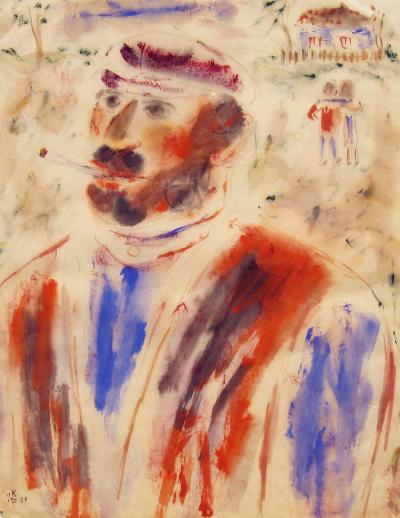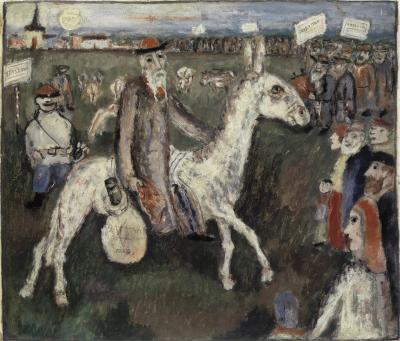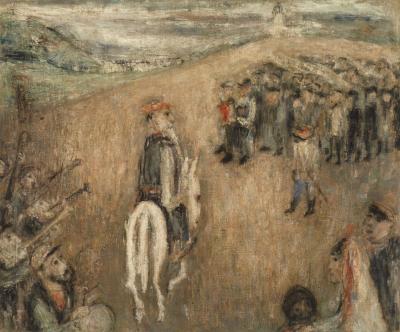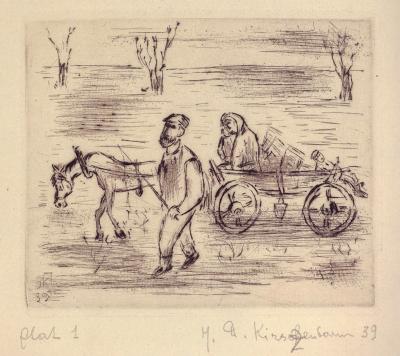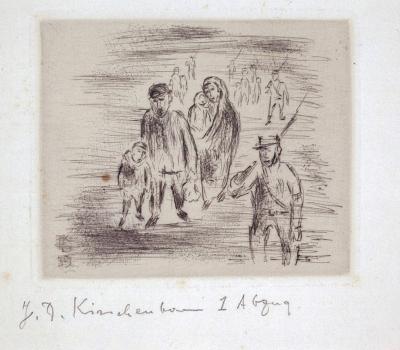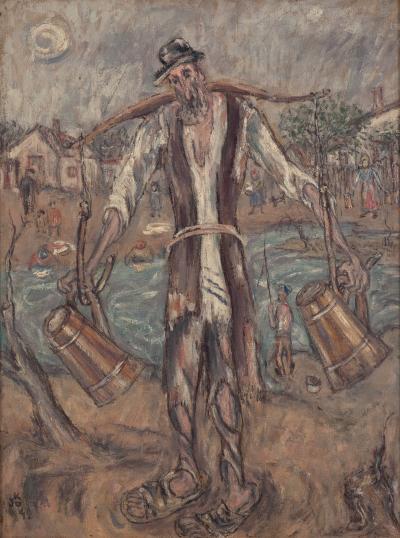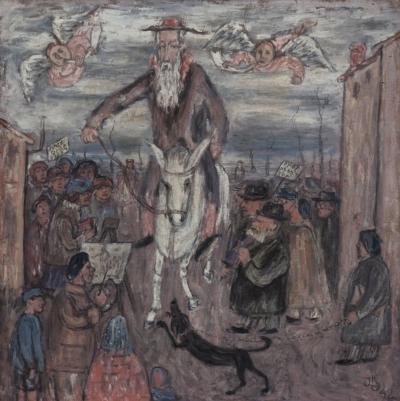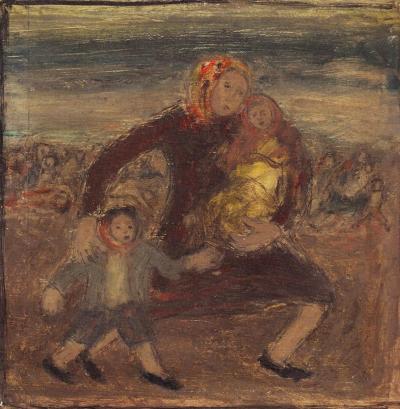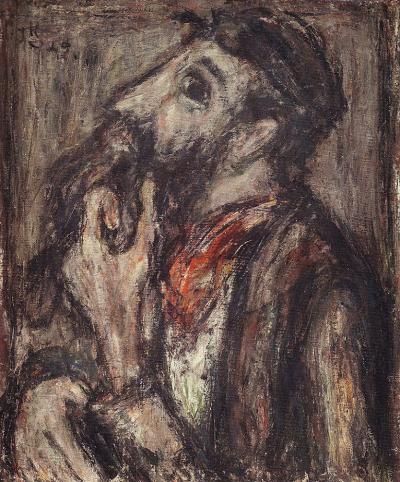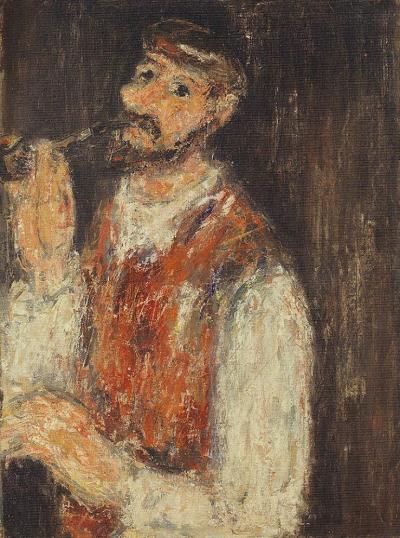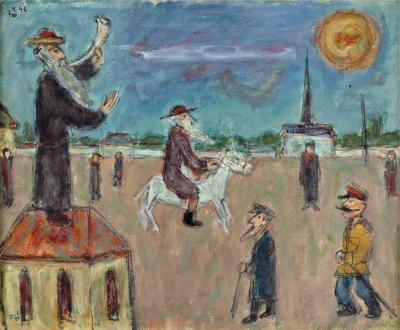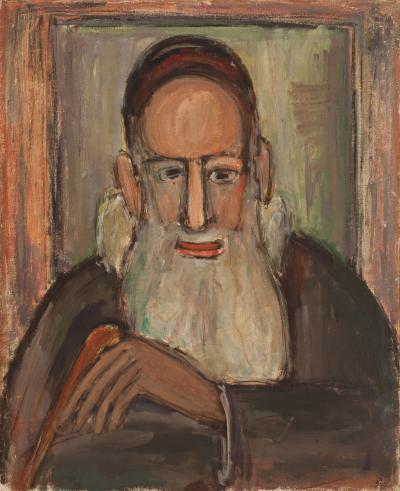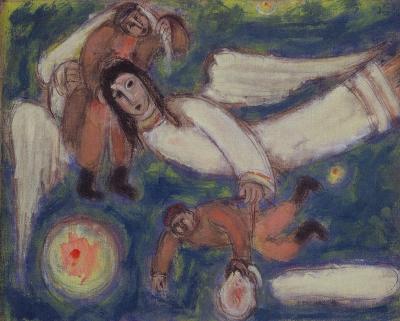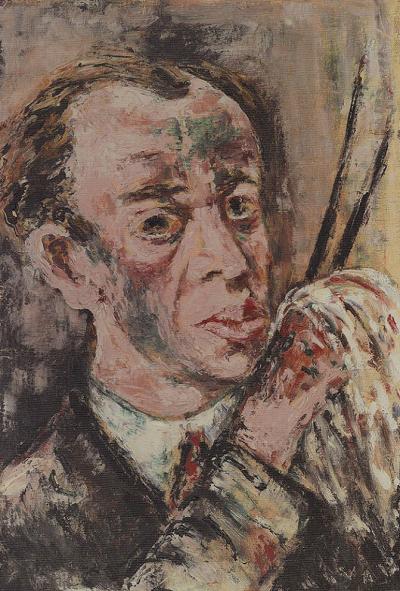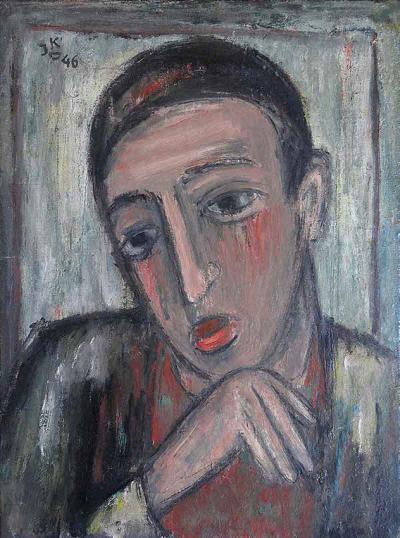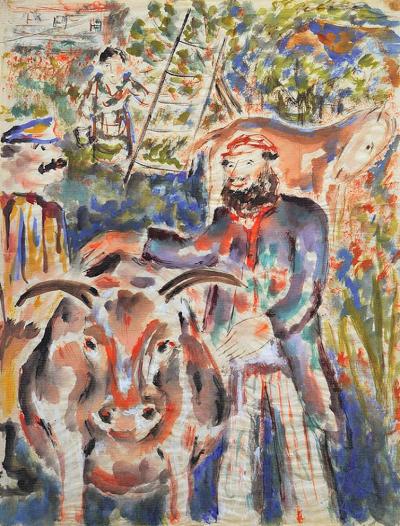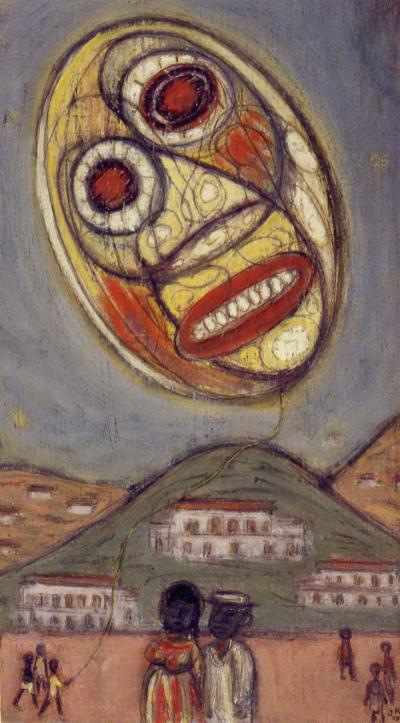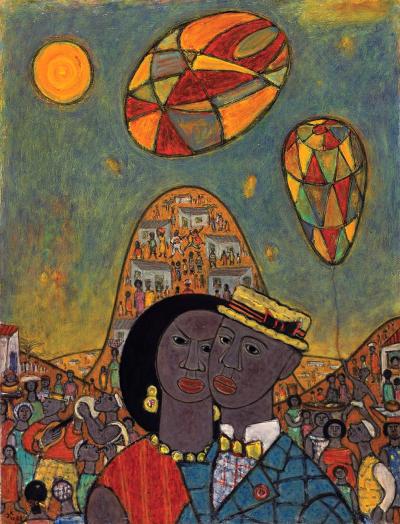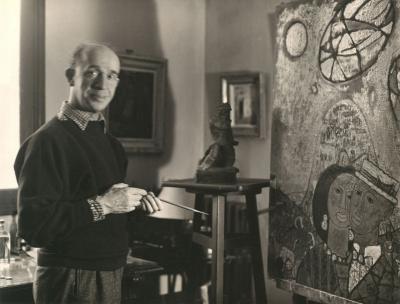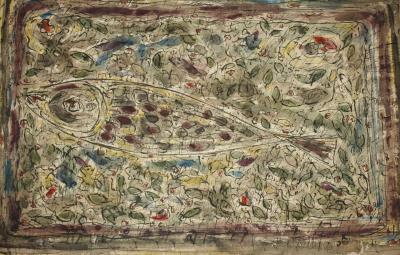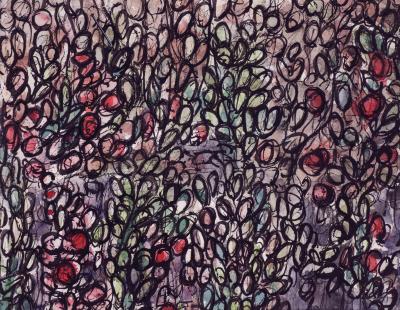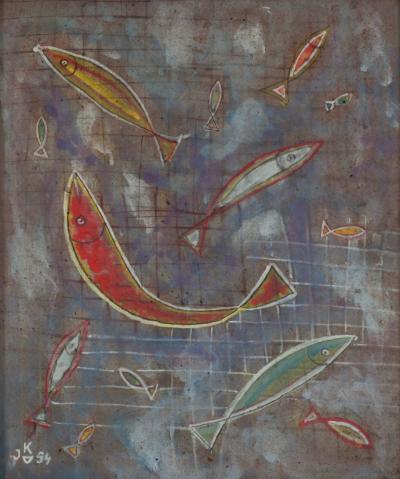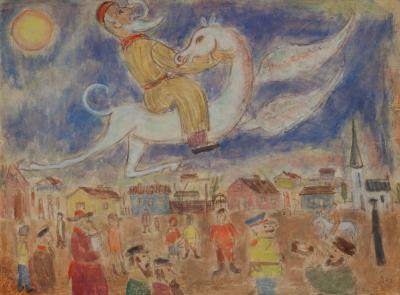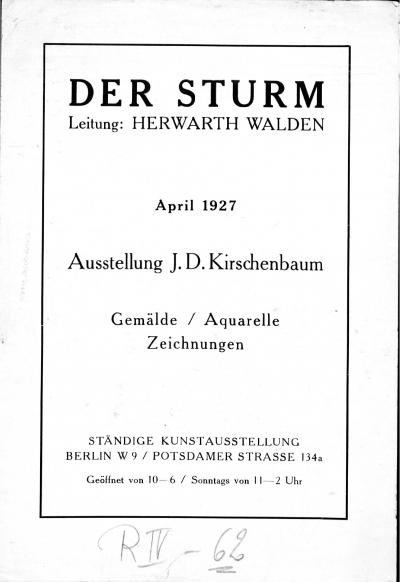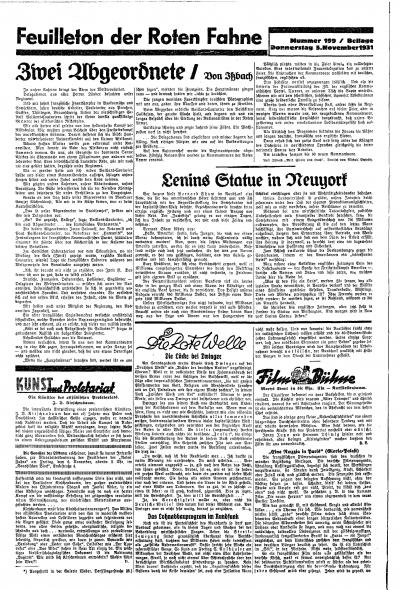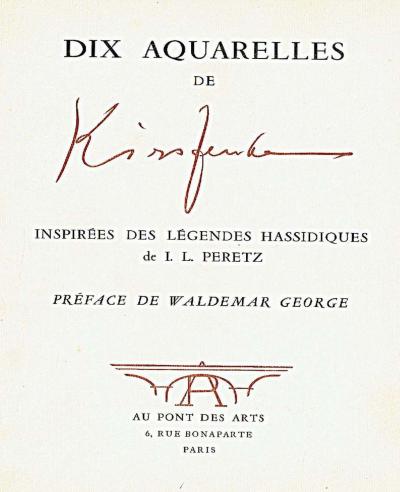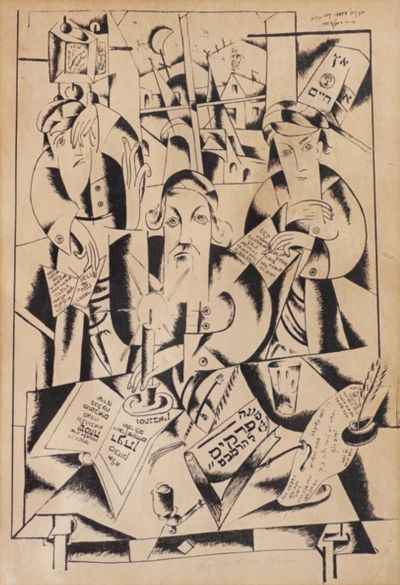Jesekiel David Kirszenbaum (1900–1954). Student of the Bauhaus

In January 1936, Kirszenbaum put on a one-man exhibition in the Galerie Mouradian-Vallotton in the Rue de Seine 41 with drawings and watercolours, which the Paris Journal Juif reported as being “in a cheerful palette between deep red and blue ... mainly dealing with Russian peasant life”.[59] During these years, the gallery handled works from the likes of Degas, Utrillo and Max Ernst. The conservative daily newspaper Paris-Midi announced Kirszenbaum’s exhibition as “Jewish painting” showing street and village scenes, poor merchants, farmers and workers. It went on to say that as far as the twenty watercolours were concerned, “the colours became more brilliant the more naively they were applied”.[60]
In 1938, the artist took part in the salon of the Association Artistique des Surindépendants, which was founded in 1929 and which mainly showed the works of surrealist and abstract painters. In 1938, he also exhibited works in the Exhibition of German Painters of the Free Artists’ Association/Exposition des Peintres Allemands of the Freien Künstlerbunds (FKB, Union of Free Artists/Union des Artistes Libres). Founded in Paris the previous year by German artists in exile, the association’s members included Max Ernst, Otto Freundlich and Hans Hartung as well as those artists primarily whose works had been removed from museums by the Nazis during the “Degenerate Art” campaign, or sold, destroyed, or defamed in an exhibition bearing the same name.
It is presumed that the “Man with cigarette” (Fig. 37), dating from the previous year, was one of the works shown at Mouradian-Vallotton. The work was one of those described in the press as watercolour street scenes with simple people in succinct contrasts of red and blue. A harmonica player and a double bass player,[61] a man with patched clothes, boots and a sack on his back[62] as well as two peasants in conversation in front of a horse and cart are also known to display this technique. He also produced paintings of an “Old Jew” with stick, cap and shoulder bag (1936),[63] an “Old Jew in Snowy Landscape” (ca. 1937)[64], the bust of a Jew[65] and “The Fisherman” (both 1938)[66] in muted brown and grey tones, reminiscent of the style of Braque and even of Rouault. Just like his earlier work in Berlin, the Jewish scenes and portraits are undoubtedly painted from memory and evoke people and events from Staszów. A “Sleepwalker” walking across the roofs of the town with a laughing moon in the sky, painted in an impressionist style around 1937 in light blue tones,[67] seems to have been influenced by Chagall or the surrealists.
In a series of paintings, the artist transferred the biblical tradition to the town of his childhood: The painting “Jewish villagers greet the Messiah” (Fig. 38), produced in 1937, shows the Saviour in the form of a Hasidim as he rides into Staszów on a white donkey. On the saddle hangs a crown cap with the Teffilin and an embroidered bag containing the 613 commandments, the mitzwot. Visible at the edge of the picture on the left are the sign for Staszów station and the stationmaster; waiting for him on the right are Hasidic rabbis and prayer leaders and several groups of townsfolk who welcome the Messiah with signs displaying Hebrew script. In 1939, Kirszenbaum painted a new version of this theme (Fig. 39), and in 1942 and 1946 two more interpretations (Fig. 43, 47). Stylistically, he alternated between a late-impressionist concept showing the artist as a master of grey tones, and a seemingly naive and colourful character setting which could have been modelled on the works of the Fauves group of artists. However, the much publicised painting by James Ensor, “Christ's Entry into Brussels” (1888),[68] that was exhibited in Paris in 1939, may have been a catalyst for the theme, and also for the figures looking into the scene from the edges of the picture and the script tablets carried aloft.
Around the same time, Kirszenbaum tackled another classic Jewish theme, the Exodus and the legend of the wandering Jew told since the middles ages, which had both achieved renewed currency due to the persecution of the Jews by the National Socialists and the resulting refugee movements. An oil sketch from 1938 in the collection of the Israel Museum in Jerusalem shows “Wandering Jews” sitting on their luggage in the open countryside.[69] In 1939, the artist created a series of etchings entitled “Exodus”. The series shows various lines of Jews escorted by soldiers (Fig. 41), a mother embracing her children,[70] and a family setting off with an open horse-drawn cart and a few belongings (Fig. 40). The artist also continued to pursue this theme after the end of the Second World War (Fig. 44).
[59] Exhibition of J.-D. Kirschenbaum, in: Le Journal Juif, 13th Edition, No. 3, 17 January 1936, page 4, 4th column, online resource https://gallica.bnf.fr/ark:/12148/bpt6k62282932/f4.image.r=Kirchenbaum. Kirszenbaum mentions the gallery in his letter of 20 April 1945 (see Comment 56).
[60] G.-J. Gros: Painters with feeling, in: Paris-Midi dated 24 January 1936, page 2, 2nd column, online resource: https://gallica.bnf.fr/ark:/12148/bpt6k4729237j/f2.image.r=Kirchenbaum
[61] J.D. Kirszenbaum 2013 (see Literature), page 140 f., https://www.kirszenbaum.com/france?lightbox=imagevuo
[62] ibid., page 89
[63] ibid., page 72
[64] ibid., page 71, https://www.kirszenbaum.com/early-period?lightbox=image5jn
[65] ibid., page 73
[66] ibid., page 149
[67] ibid., page 67
[68] The J. Paul Getty Museum, Los Angeles, http://www.getty.edu/art/collection/objects/811/james-ensor-christ%27s-entry-into-brussels-in-1889-belgian-1888/
[69] J.D. Kirszenbaum 2013 (see Literature), page 88
[70] ibid., page 93

















































































